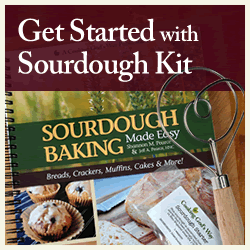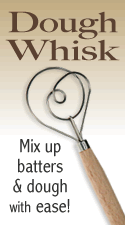QUESTIONSScience & Health
Feeding, Care & Use of Sourdough Starter
ANSWERSScience & HealthWhat is sourdough starter? How does sourdough starter work? What are the benefits of sourdough?
Is all sourdough made correctly? What about store-bought sourdough products? Feeding, Care & Use of Sourdough StarterCan I make my own sourdough starter?
We’ve heard from many students who attempted to make a sourdough starter before coming to one of our classes that they did not have good results. The sourdough starter either did not work or more often than not tasted absolutely awful! Now it makes a lot of sense why once our ancestors got a good sourdough starter going they took great care of it. This is why it is common to have starters passed from one generation to the next. What type of flour is best for feeding sourdough starter? I don’t want to be bothered with a scale, can I just feed the starter by volume? I accidentally over-fed my sourdough starter? What should I do? Did I kill it? How do I know if my sourdough starter is dead?
What’s That Funny Looking Liquid On Top of My Starter? Can I use the sourdough starter cold, right out of the fridge? How much sourdough starter should I keep on hand? How do I get maximum "rise" when making loaves of sourdough bread? In sourdough recipes I see the terms “Fed within previous 12 hours” and “Recently fed and active”, what does that mean?
|
|
...obtaining better health with God foods
Disclaimer
The nutritional advice provided through this website is intended to educate individuals about diet and a healthy lifestyle approach. No advice provided is intended to diagnose, cure, or prevent any disease; or be construed as a substitute for medical attention. Individuals with a specific medical condition or concern should seek advice from a physician.
Copyright © 2016 Cooking God's Way · License & Usage · Disclaimer & Privacy Notice · Shipping & Refunds · Affiliate Program




